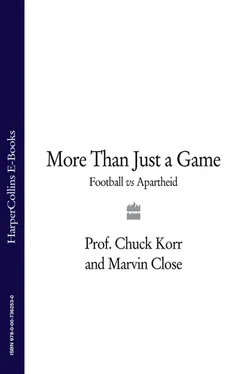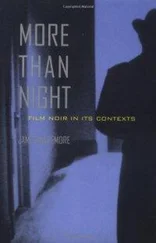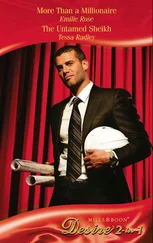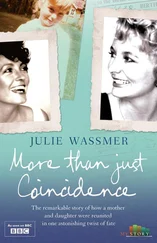Many of Sedick’s interrogators were hard-line right-wingers who positively despised black and coloured political agitators and reserved their most savage and sadistic interrogation techniques for them. In their eyes, Sedick was a terrorist, incapable of understanding that he was challenging a system that had been created by the racially superior whites to build a better, happier, more prosperous South Africa. The only thing holding the country back was men like this Sedick Isaacs trying to take the law into their own hands. He threatened the security of the state and therefore had to be punished.
Flouting every international agreement on human rights and the treatment of prisoners, a team of interrogators worked in shifts from eight o’clock in the morning until midnight, taking it in turns to work Sedick over, both mentally and physically. First, he was threatened with torture. Members of the security police described in graphic detail and with great relish what they intended to do to him if he refused to co-operate. They wanted information – about Sedick’s comrades, about the plans his group had for future sabotage, where and when it would happen.
When Sedick didn’t give them the information they wanted he was subjected to long bouts of sleep deprivation, to soften him up for future beatings and punishment. Used as a weapon by torturers the world over, depriving a prisoner of their sleep leads to disorientation, reduces a body’s tolerance to physical pain, and makes them highly suggestible to cutting a deal or volunteering information.
Then his interrogators made good their earlier, graphic promises and set about Sedick with fists, rifle butts, and feet, following up the beatings by attaching electrodes to various parts of Sedick’s body. The torture lasted for days. Sedick learned really to ‘expect hell’ if the guards stepped unsteadily into an interrogation session smelling of alcohol. Fortified by ‘Dutch courage’, the torturers would launch brutal physical attacks on the prisoners, any last inhibitions spirited away by drink.
His interrogators continually informed Sedick that his comrades had told them everything, there was no reason for him to hold back, but to Sedick that made no sense. Why would his torturers continue to beat him and give him electric shocks in order to extract information if they already knew everything?
For many prisoners, as with Sedick, the torture would continue throughout the hours of darkness. Inmates in another section of the police HQ cells were woken one night and subjected to an insidious form of psychological torture. A prison guard crept sinisterly up and down the corridors whispering through the grilles in each of the doors that one of the men was going to be killed that night.
Prisoners were also set against each other. Common-law inmates were paid with extra rations and privileges to attack, beat, and sexually assault political prisoners. The torturers thoroughly explored every single possibility to destabilize, disorient, and put the fear of God into the reviled politicos.
Torture, however, in Sedick’s case, served only to harden his resolve, to make him determined to survive the ordeal of detention and continue the fight against apartheid, whether in prison or on the outside. Inevitably, it would be the former. South Africa’s security services had arrested Sedick as part of a much wider ‘anti-terrorist’ project with the object of rounding up as many active anti-apartheid resistance fighters as possible, either to make them disappear or to lock them away. The government increased the security forces’ budget and gave them almost unlimited powers to track down anti-apartheid activists – not just in South Africa but abroad, too.
While Sedick awaited trial, a group of men who, in the future, he would count among his closest friends in prison, was also being targeted by the South African security services.
Lizo Sitoto was a bear of a man. He was unusual among the majority of black South Africans in that he revelled in playing a sport that many regarded as ‘the white man’s game’ – rugby. In the Eastern Cape, however, black sportsmen had long played top-quality rugby and saw the game as their own. Indeed, they took pride in claiming that, if they had been given a fair chance to compete, many blacks would be representing South Africa internationally as members of the Springboks. For Lizo and his soon-to-be fellow prisoners, Marcus Solomon and Steve Tshwete, as for many blacks, culture in the Eastern Cape revolved around the twin pillars of church and club rugby.
Big, strong, and physically powerful, Lizo volunteered to join the African National Congress’s armed military wing, Umkhonto we Sizwe (MK), ‘The Spear of the Nation’. The MK never presented a great threat to the stability of white South Africa, but the government exaggerated its importance for reasons of propaganda and exploited its existence as a means of justifying further repressive policies. The MK was sufficiently well organized and funded to run military training camps over the borders in neighbouring countries such as Zambia and Botswana. Lizo was sent to Northern Rhodesia to undergo training.
The African National Congress (ANC) had originally been formed as a multi-racial national organization, its aim the end of all racial discrimination, and universal suffrage irrespective of colour, race, or creed. It based its beliefs on Gandhi’s principles of peaceful protest. This, however, was to change in response to a series of shocking events in 1960 which convinced the leadership of both the ANC and the new movement formed from it, the Pan African Congress (PAC), of the need to take up armed struggle.
In 1960 Lizo was eighteen years old and already politically mature. Growing up in the Eastern Cape, he had been heavily influenced by his mother, who was a member of the black Women’s League political movement. As with many thousands of non-whites across South Africa, the events of 1960 shocked him into pursuing armed, direct action as a response to the evils of apartheid.
It began in a place called Sharpeville, a suburb of Johannesburg. At around ten o’clock on the morning of 21 March 1960, a crowd of over five thousand black people gathered outside the local police station to take part in a peaceful demonstration which formed part of a five-day-long non-violent campaign calling for an end to the Pass Laws. Protesters were asked by the organizers to leave their passbooks at home and then formally and peaceably present themselves at police stations across the country for arrest.
The demonstrators anticipated that they would be imprisoned, that prison and police cells would be filled to overflowing, and that the resultant shortage of labour would deal a major blow to the South African economy. They also assumed that, since the government was trying to convince its allies in the West that it was reasonable and had been elected as a result of a free vote, it would not resort to wholesale violence, at least not in such a public arena. Tragically, the opposition had misread the government’s position. They had no idea just how far government officials would be willing to go.
As the crowd began to swell in number throughout the morning, the military sent in low-flying jets to intimidate the demonstrators into dispersing. The crowd stood its ground. Police then set up a line of Saracen armoured cars between the station and the protesters, who, according to reports at the time, sat down in front of the police and sang hymns.
At 1.15 p.m., just over three hours into the hitherto peaceful demonstration, local police commander D. H. Pienaar claimed that a rock had been thrown at his car. His men trained their guns on the unarmed crowd and shot indiscriminately at men, women, and children, even as they turned and ran. Eyewitnesses said those in the crowd fled like rabbits and fell like stones. Sixty-nine people were killed, 180 injured. Scores of people were ferried in the backs of cars and lorries to the Bagawanath Hospital near Johannesburg, suffering from gunshot wounds. Many of the wounded were later put under arrest in their hospital beds, bundled into police vans to be taken away for questioning.
Читать дальше












